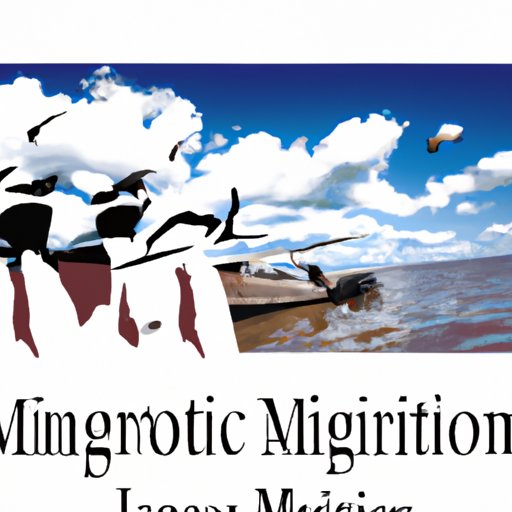What is Migration? Understanding the Movement of People Around the World
Migration, at its core, is the movement of people from one place to another. This can happen within a country’s borders or across international borders. People migrate for a variety of reasons, including economic opportunity, social or political reasons, and personal circumstances.
Definition and Explanation
Migration is a concept that has existed for as long as human beings have been on earth. It occurs when individuals or groups of people leave their homes and relocate to new areas. There are different types of migration, including internal, international, forced, and voluntary. Internal migration is when people move within their own country, while international migration is when people move between countries. Forced migration occurs when people are forced to leave their homes due to war, conflict, natural disasters, or persecution. Voluntary migration happens when people choose to move, usually in search of better economic opportunities or to be closer to their families.
There are many different factors that can cause people to migrate. Economic reasons, such as better job opportunities or higher wages, are some of the most common drivers of migration. Social or political reasons, including conflicts and persecution, are other common reasons why people migrate. Personal circumstances, such as a desire to reunite with family members, can also lead to migration.
The consequences of migration can be significant for both the individuals migrating and the societies they are leaving and going to. For example, migration can lead to increased economic growth in destination countries, but it can also lead to a brain drain in countries of origin, where skilled workers leave for better opportunities. There may also be cultural and social impacts, with changes to family structures and community dynamics.
Historical Perspective
Migration has been a constant throughout human history. Throughout the years, people have migrated in search of resources, more fertile land, or to escape from persecution or conflict. The most significant mass migration occurred in the 19th and early 20th centuries when millions of people left Europe and moved to the Americas and other parts of the world.
In more recent years, the pace of migration has increased. Globalization and advances in transportation and communication have made it easier for people to move across borders. Political and social factors have also played a part in driving migration, including conflicts in the Middle East and Africa and economic instability in Latin America.
Personal Accounts
Behind every migration story, there are individual people with unique experiences. People migrate for different reasons, and their journeys are often fraught with challenges and hardships. For example, refugees, forced from their homes by war or persecution, face uncertainty and danger as they attempt to flee to safety. Many migrants also face discrimination and xenophobia from the communities they are moving to.
At the same time, migration can also bring positive changes to individuals’ lives, including new opportunities and a sense of belonging in a new community. It’s important to understand the experiences of migrants to gain a better understanding of the broader implications of migration on societies and communities.
Economic Impact
Migration can have a significant impact on the economy of both destination and departure countries. At the destination, migrants often fill in skills gaps, and they can be an engine for economic growth. In departure countries, remittances sent back by migrants to their families can provide a significant boost to the economy. However, migration can also lead to wage depression and economic inequality in destination countries and can contribute to brain drain and skills shortages in the countries of origin.
Political Implications
Migration can also have significant political implications. Governments have the ability to craft immigration policies that can influence the number and type of migrants who move to their countries. There may also be political and social tension over migration, particularly if it is seen as a threat to jobs or cultural values. Political leaders around the world have responded to the challenges of migration in different ways, with some advocating for tighter immigration controls and others promoting more open policies.
Future Directions
The future of migration is constantly changing, and there are many factors that will shape it in the years to come. Environmental factors, including climate change, may lead to further migration as people are forced to leave their homes due to natural disasters or rising sea levels. Demographic changes, including aging populations and declining birth rates in some countries, will also influence migration patterns. Governments and policymakers must prepare for these changes and invest in solutions that promote a positive outcome for all involved.
Conclusion
Migration is a complex issue that affects individuals, societies, and economies around the world. Understanding the reasons why people migrate and the impacts of migration on all involved is essential for developing policies that promote a positive outcome for all. By learning from the experiences of migrants and exploring the different dimensions of migration, we can build a better future for everyone.
